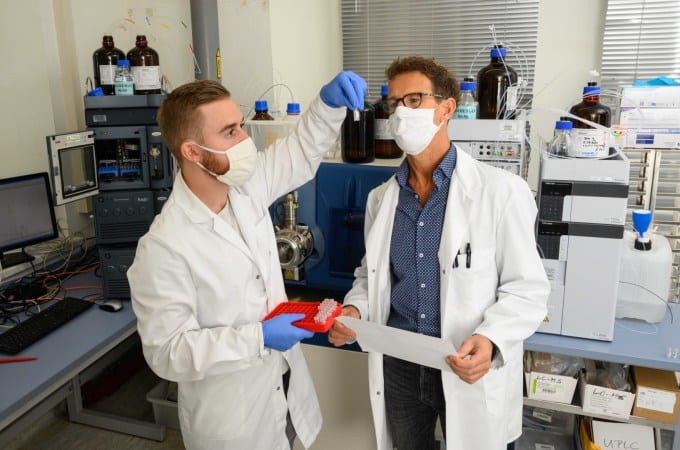The toxic cocktail with which Staphylococcus aureus damages cells and tissues also may have another outcome: specific immune cells are stimulated by the bacterial toxin to produce specialized messenger substances that help to reduce inflammation and to promote tissue healing.
This previously unknown mechanism may be a significant finding for future treatments of skin inflammation and chronic wounds.
Researchers from the University of Jena, Jena University Hospital and the Leibniz Institute on Aging – Fritz Lipmann Institute (FLI), together with colleagues from Harvard Medical School and the University of Naples, have studied in particular the bacterial toxin “α-Hemolysin” and examined its effect on M2 macrophages. M2 macrophages are immune cells which, in the later stages of an inflammatory reaction, ensure that bacteria that have been killed, and damaged cell components, are removed, and that the tissue regenerates.
Immune cells produce anti-inflammatory messenger substances

Credit: Jens Meyer (University of Jena)
The researchers showed that α-hemolysin binds to specific receptor proteins on the surface of M2 macrophages and thus triggers the production of anti-inflammatory messenger substances in the cells, which then cause the inflammation to resolve. In the study, the scientists were also able to show that these transmitters promote tissue regeneration in an animal model. The anti-inflammatory messenger substances include resolvins, maresins and protectins that are formed from omega-3 fatty acids.
The study was conducted as part of the Collaborative Research Centres SFB1127 ChemBioSys and SFB1278 Polytarget at the University of Jena and was funded by the German Research Foundation.
Staphylococcus aureus-derived α-hemolysin evokes generation of specialized pro-resolving mediators promoting inflammation resolution, Cell Reports. October 13, 2020.



